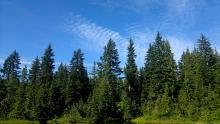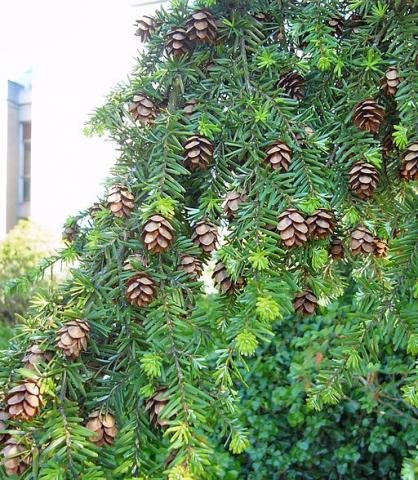
Image Credit: Roland Tanglao
Common name(s): Western hemlock, Pacific hemlock, west coast hemlock
Identification: average 30-50 meters in height, the uppermost branch usually appears weighted and bends
Needles: there are two types of needles: long and short; the longer needles are situated side by side in a uniform pattern; the shorter needles grow sporadically on the upper part of the twig; all needles are thin, flat, stiff, and smaller than any other conifers in the region; color is yellowish-green with a whitish color on the underside
Fruit: cones are small (about 1.5-2.5 cm) and come in great quantity; greenish in color and turn brown with age
Habitat: mild climates where fog and precipitation common; sometimes found in stream beds
Ecology: Tsuga hetecrophylla provides food for birds, butterflies and moths including the western hemlock looper and the phantom hemlock looper. For the most part the birds eat the cone seeds and needles. Birds, also, will nest in the crevices and holes in older trees. Deer, elk and rabbits browse on the young seedlings. If living near a stream or river frequented by beaver, they enjoy eating young western hemlock.

Image Credit: Menchi
References:
http://plants.usda.gov/java/profile?symbol=TSHE&photoID=tshe_003_ahp.tif
http://www.bcadventure.com/adventure/wilderness/forest/westhem.htm
http://www.na.fs.fed.us/pubs/silvics_manual/Volume_1/tsuga/heterophylla.htm